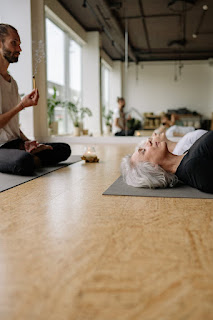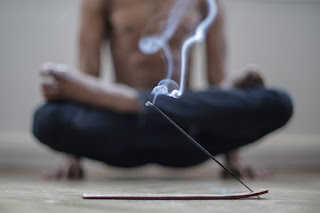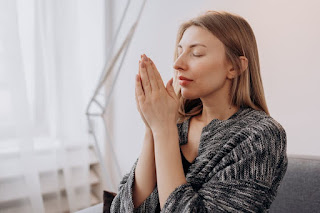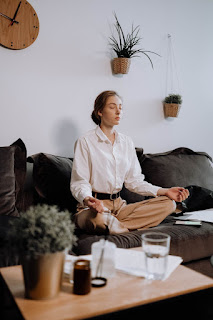Bedtime Yoga: Poses to Promote Restful Sleep
In the quest for a peaceful night’s sleep, the ancient practice of yoga offers timeless solutions that extend beyond the mat and into the tranquility of the bedroom. “Bedtime Yoga: Poses to Promote Restful Sleep” delves into how integrating yoga into your nightly routine can not only soothe your mind and body but also enhance the quality of your rest. This article illuminates the intersection of neuroscience and holistic wellness, drawing on insights from experts to explore how sleep isn’t just influenced by our actions at dusk but is intricately linked to our daytime habits.
The connection between yoga and improved sleep is well-documented, with research highlighting its positive effects on the nervous system and its power to alleviate stress—a frequent culprit behind sleepless nights. Yet, to fully embrace the benefits of bedtime yoga, understanding the science of sleep and the impact of our daily routines is crucial. From the sun’s first rays to its last, the choices we make can pave the way for a night of deep, restorative sleep.

In this comprehensive guide, we will walk you through top yoga poses specifically chosen for their sleep-promoting benefits, backed by scientific insight and practical advice for integrating them into your evening routine. Furthermore, we will share a carefully curated bedtime yoga sequence that promises to guide you gently into a state of relaxation, preparing your body and mind for a restful night. Lastly, we recognize that the environment plays a significant role in our sleep quality. Thus, we offer tips for creating a serene space that not only enhances your yoga practice but also supports a peaceful slumber.
Embrace the transformative power of bedtime yoga and embark on a journey towards nights filled with restful sleep and days brimming with energy and vitality. Let’s unfold the mat, quiet the mind, and discover the poses and practices that await to lead you into the embrace of rejuvenating sleep.

The Science of Sleep and Yoga
In the bustling rhythm of modern life, sleep often becomes elusive, leaving many in search of natural methods to improve their sleep quality. Enter yoga—a practice not only for the body but for the mind and soul, offering a bridge to the tranquil shores of restful sleep. Understanding the science behind yoga’s impact on sleep, particularly through the lens of neuroscientist Andrew Huberman’s research, reveals why it is an effective remedy for the sleep-deprived.
Andrew Huberman’s Insights on Sleep
Stanford University’s Andrew Huberman has dedicated extensive research to understanding how our brain’s functionality affects our sleep patterns. His work highlights two critical aspects: the role of light in regulating our circadian rhythms and the impact of stress on sleep quality. Huberman emphasizes the importance of natural light exposure, especially in the morning, to set our internal clock for better sleep at night. Furthermore, he points out how stress activates our sympathetic nervous system, leading to increased alertness and difficulty sleeping. If you’d like to learn more check out Andrew Hubermans site. Here, yoga’s role becomes crucial as it helps transition the body into a state of relaxation, activating the parasympathetic nervous system, which is essential for initiating sleep.

Yoga’s Effect on the Nervous System
Yoga’s influence extends deep into the body’s nervous system, serving as a counterbalance to the day’s stressors. Practices like deep breathing (pranayama), gentle stretching, and mindfulness meditation activate the parasympathetic nervous system, often referred to as the “rest and digest” system. This activation signals the body to slow down, decrease heart rate, and increase intestinal and gland activity, leading to a state conducive to sleep. Poses such as Uttanasana (Standing Forward Bend) or Viparita Karani (Legs-Up-The-Wall Pose) are particularly effective in this regard, as they encourage a sense of physical and mental release.
Stress Reduction Through Yoga
Stress and anxiety are among the leading causes of sleep disturbances. Yoga addresses this directly by fostering a mind-body connection, encouraging the release of tension and the cultivation of mindfulness. Through consistent practice, yoga teaches the practitioner to stay present and calm, qualities that significantly lower stress levels. As stress diminishes, the mind becomes quieter, making it easier to fall asleep and stay asleep throughout the night.
Yoga as a Tool for Better Sleep
Integrating yoga into your nighttime routine doesn’t require expertise or flexibility; it’s about creating a moment of serenity that honors your body’s need for rest. Even a few minutes of yoga can prepare the mind and body for sleep, making it a powerful ally in the quest for restful nights and energized days.

Morning and Daytime Practices for Better Sleep
While the focus of “Bedtime Yoga: Poses to Promote Restful Sleep” predominantly lies in the tranquil hours of the evening, the foundation for a night of deep, restorative sleep is actually laid much earlier. Andrew Huberman, a neuroscientist renowned for his sleep research, emphasizes that our sleep quality is significantly influenced by our actions and routines during the day, particularly in relation to light exposure and stress management.
The Importance of Morning Light
One of Huberman’s pivotal recommendations for improving sleep involves the strategic exposure to natural light. Morning light exposure, especially within the first hour after waking, can profoundly affect our circadian rhythm, the body’s internal clock that dictates sleepiness and wakefulness. This exposure helps to regulate the production of melatonin, the hormone responsible for sleep, ensuring that it peaks at the appropriate time in the evening. Integrating a morning yoga routine outside or near a source of natural light not only energizes the body but also synchronizes our biological clock towards better sleep.
Managing Stress Throughout the Day
Stress accumulation over the day can be detrimental to sleep quality. Huberman suggests engaging in activities that activate the parasympathetic nervous system, promoting relaxation and reducing cortisol levels, the stress hormone. Yoga and meditation are powerful tools in this regard, offering a peaceful retreat for the mind and body amidst the day’s hustle. Implementing short yoga stretches or mindfulness exercises during breaks can serve as effective stress buffers, preparing the ground for a peaceful night ahead.

Physical Activity and Sleep
In addition to yoga, Huberman and other sleep experts advocate for regular physical activity as a means to enhance sleep quality. However, the timing of exercise can be crucial; vigorous activities are best performed in the morning or early afternoon, allowing the body’s core temperature and heart rate to return to resting levels well before bedtime. Gentle yoga in the evening, on the other hand, can serve as an excellent pre-sleep ritual, soothing the body into a state ready for rest.
Diet’s Role in Sleep
What we consume throughout the day also impacts our sleep. Caffeine and sugary foods can disrupt sleep patterns if consumed late in the day. A balanced diet, rich in fruits, vegetables, and whole grains, supports overall health and contributes to better sleep. Hydration is crucial, but limiting fluids before bedtime can minimize nighttime disruptions.
Creating a Pre-Sleep Ritual
Cultivating a pre-sleep ritual is another cornerstone of good sleep hygiene. This can include dimming the lights, reducing screen time, and engaging in calming activities such as reading or gentle yoga. Such rituals signal to the brain that it’s time to wind down, easing the transition into sleep.

Top Yoga Poses for Enhanced Sleep
Yoga, with its gentle stretches and mindful breathing, holds the key to unlocking a night of serene sleep. Through a selection of targeted poses, individuals can ease the mind, release physical tension, and cultivate a state of relaxation conducive to sleep. Here are some of the most effective yoga poses designed to promote restful sleep.
1. Viparita Karani (Legs-Up-The-Wall Pose)
Often hailed as a miracle cure for insomnia and restlessness, Viparita Karani is a restorative pose that involves lying on your back with your legs extended upward against a wall. This pose helps in relaxing the nervous system, lowering blood pressure, and relieving lower back tension. It’s particularly beneficial for those who spend long hours on their feet, offering a soothing transition into nighttime calm.
2. Balasana (Child’s Pose)
Balasana is a grounding pose that encourages a sense of safety and comfort, qualities that are essential for a good night’s sleep. By folding forward and resting your forehead on the ground, this pose helps to soothe the brain and relieve stress and fatigue. It’s also effective in gently stretching the hips, thighs, and ankles, releasing the day’s physical burdens.
3. Supta Baddha Konasana (Reclining Bound Angle Pose)
This gentle, restorative pose involves lying on your back with your feet together and knees wide apart, creating a butterfly position. Supta Baddha Konasana helps to open up the hips and groin, areas where stress and tension often accumulate. It also promotes deep relaxation throughout the body and mind, making it easier to drift off to sleep.
4. Savasana (Corpse Pose)
Although it appears simple, Savasana is a powerful pose for inducing a state of deep relaxation. Lying flat on your back with your limbs gently spread apart, this pose allows for a total release of bodily tension. It serves as an excellent preparation for sleep, guiding the mind away from the whirlwind of daily thoughts and into a peaceful, meditative state.
5. Paschimottanasana (Seated Forward Bend)
Paschimottanasana calms the brain and helps relieve stress and mild depression, making it ideal for preparing the body and mind for sleep. This forward bend pose stretches the spine, shoulders, and hamstrings, facilitating a release of tension throughout the body.

Bedtime Yoga Sequence for Optimal Rest
Creating a bedtime yoga sequence involves stringing together poses in a way that flows naturally and gently coaxes the body and mind toward relaxation. This sequence is designed to be performed in the comfort of your bedroom or a quiet, comfortable space conducive to winding down.
1. Start with Deep Breathing
- Begin in a comfortable seated position, closing your eyes and focusing on deep, slow breaths. Inhale for a count of four, hold for a count of seven, and exhale for a count of eight. This breathing technique helps calm the mind and signals the body that it’s time to slow down.
2. Move into Balasana (Child’s Pose)
- Transition from seated to Balasana, extending your arms forward or alongside your body, forehead resting on the ground. Spend a few minutes here, allowing every exhale to sink you deeper into relaxation.
3. Viparita Karani (Legs-Up-The-Wall Pose)
- Shift to Viparita Karani by lying on your back and resting your legs vertically against a wall. This inversion allows for gentle relaxation of the legs, hips, and lower back, encouraging circulation and easing tension.
4. Supta Baddha Konasana (Reclining Bound Angle Pose)
- From Viparita Karani, transition into Supta Baddha Konasana by bending your knees, bringing the soles of your feet together, and letting your knees fall open to each side. Place your hands on your belly or by your sides and breathe deeply, focusing on the sensation of breath and relaxation spreading through your body.
5. Savasana (Corpse Pose) with Deep Breathing
- Conclude your sequence with Savasana, lying flat on your back with your arms and legs gently spread apart, palms facing upward. Return to the deep breathing technique introduced at the beginning of the sequence, allowing your body to fully relax and release any remaining tension.
6. Mindfulness or Meditation
- While in Savasana, you may choose to engage in a brief mindfulness exercise or meditation, focusing on a mantra or simply observing your breath. This practice can enhance the relaxation effect and prepare the mind for sleep.
Finishing the Sequence
- To finish, gently wiggle your fingers and toes, bringing awareness back to your body. Slowly roll to one side, taking a moment to appreciate the calmness, and then gently push yourself up to a seated position.
This bedtime yoga sequence is designed to be a peaceful journey towards sleep, integrating poses that release physical tension and practices that calm the mind. By performing this sequence, you create an ideal condition for a restful night, signaling to your body and mind that it is time to rest.
As you incorporate this sequence into your nightly routine, feel free to adjust the duration of each pose and the overall length of the sequence to suit your personal comfort level. The goal is to foster relaxation and sleep readiness, not to adhere strictly to timings or sequence.

Creating a Sleep-Conducive Environment for Bedtime Yoga
A tranquil environment is essential for a restful night’s sleep, and the space where you practice bedtime yoga should reflect this need. The ambiance, temperature, and even the arrangement of your room can significantly impact your ability to relax and drift off to sleep. Here are some suggestions for creating a serene and sleep-friendly yoga space.
1. Dim the Lights
Lowering the lights signals your brain that it’s time to wind down, encouraging the production of melatonin, the sleep hormone. Use soft, warm lighting if you need light to see your yoga poses. You might consider candles or dimmable lamps to create a calming atmosphere.
2. Maintain a Comfortable Temperature
Ensure your room is at a comfortable temperature for both yoga and sleep. A slightly cooler room, around 65 degrees Fahrenheit (18 degrees Celsius), is often recommended for sleeping, but ensure you’re warm enough during your yoga practice, possibly using layers that can be removed.
3. Minimize Noise Distractions
A quiet environment helps to maintain focus and relaxation during yoga and sleep. If you’re in a noisy area, consider using earplugs during your practice or a white noise machine to drown out disruptive sounds.
4. Use Aromatherapy
Scents like lavender, chamomile, or sandalwood can enhance relaxation. Using essential oils or scented candles during your bedtime yoga routine can create a soothing atmosphere, making it easier to relax and prepare for sleep.
5. Optimize Your Yoga and Sleeping Area
Keep your yoga practice area clutter-free to promote a sense of peace and tranquility. Ensure your mattress, pillows, and bedding are comfortable and supportive. The physical space where you practice yoga and sleep should invite relaxation and comfort.
6. Digital Detox
Limit exposure to screens and electronic devices at least an hour before bedtime. The blue light emitted by screens can interfere with your ability to fall asleep. Consider reading a book or journaling after your yoga practice instead of using electronic devices.
By integrating these elements into your bedtime routine, you can enhance the effectiveness of your bedtime yoga practice and promote a deeper, more restorative sleep. Creating an environment that supports relaxation and sleep can transform your bedroom into a sanctuary for rest, helping you to recharge fully each night.
With our environment set and our understanding of yoga’s benefits on sleep deepened, this holistic approach aims to foster a serene transition to sleep, ensuring a restful night that supports overall well-being.

Conclusion: Embracing Bedtime Yoga for a Better Night’s Sleep
In today’s fast-paced world, where stress and digital overload have become prevalent, finding solace in the calming practice of bedtime yoga offers a natural and effective remedy for sleeplessness and restlessness. By embracing the gentle, restorative poses and sequences we’ve explored, you’re not just participating in a physical activity; you’re engaging in a profound practice that nourishes the mind, body, and soul, guiding you towards a state of peaceful sleep.
The science of sleep, illuminated by the research of experts like Andrew Huberman, underscores the importance of our daily routines, light exposure, and stress management in shaping our sleep quality. Integrating yoga into our evening rituals acts as a powerful tool, leveraging our body’s natural mechanisms to transition smoothly from the day’s activities into the night’s rest.
Creating a routine that incorporates the top yoga poses for sleep, followed by a sequence designed specifically for bedtime, can significantly improve the ease with which we fall asleep and the depth of our sleep. Moreover, preparing a sleep-conducive environment enhances the effectiveness of our practice, ensuring our physical space supports our journey towards restful sleep.
As we conclude, remember that the practice of bedtime yoga is as much about the journey as it is about the destination. It’s an invitation to slow down, to connect with oneself, and to embrace the present moment. Through consistent practice, bedtime yoga can transform your nights, leading not just to better sleep, but to a more balanced, peaceful, and fulfilling life.
Let this guide be a starting point for your exploration into the restorative power of yoga at bedtime. As you incorporate these practices into your nightly routine, may you find the peace and rest you seek, awakening each morning refreshed, revitalized, and ready to embrace the day ahead with open arms.





